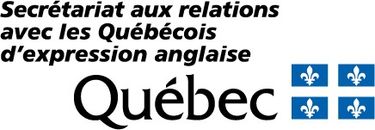Principal Investigator, Geodata project, Jeffery Hale Community Services in English (SCLA-JH)
March 2023
How did you originally find yourself in Quebec?
In 1972, I was the field director for a geographical expedition out of York University in Toronto. We mapped the human condition in multiple inner cities by looking at issues experienced and where they occurred. When doing a speaking tour at various universities, I was invited by Laval University to participate in and possibly start an expedition analyzing human issues in Quebec City. After completing the speaking tour, I returned to pursue my master’s degree and became very interested in Quebec culture and how different it was from southern Ontario and the English-speaking world I was raised in.
How did you get involved with the English-speaking community?
I taught Geography at CEGEP Champlain – St. Lawrence in Quebec City and did statistical analysis with the students. We mapped linguistic landscapes using census data to look at the number of English speakers across Quebec, which was information nobody really knew. In 1983, I did a summer project on the perception of anglophones in the Quebec City region, after which I began working with school boards and local English-speaking community groups. One of my first projects was helping the local school boards define their respective territories identifying where the English-speaking population was, because they had to effectively justify their existence and understand how to structure themselves in the Quebec City region.
You specialize in “spatial analysis”: how would you describe this field in layman’s terms?
It’s like using a microscope, but instead of looking at chromosomes, I’m looking at human populations and how they interact with their environments. Sometimes the information we need to understand a population is not immediately visible, so we need to take a step back to examine both the whole and its various components. I use different tools such as infrared photography, satellite pictures, and surveys to locate objects and features in space. By analyzing the location, proximity, and similarity of various factors, I can create distinct profiles of a particular place or community.
This process, known as "geodemographics," is what I am currently doing as part of a project for Health Canada, where I am creating profiles of the English-speaking community in Quebec’s many regions.
Why is this kind of data important?
It allows us to look at the situations of people in particular places, by getting the facts about their realities and cutting through the biases as much as possible. For example, in terms of health access, if we can show there is demand for specific services in specific areas, this helps justify funding requests. That's why it's important for policy: unless you know where things are, how can you change them? Creating visualizations of complex data, that can be easily shared online, also helps simplify and communicate issues about vulnerable communities to both decision-makers and majority populations.
What have you discovered in relation to Quebec’s English-speaking community?
When comparing health service use of English speakers in the Quebec City region in 2019 and 2020, we saw a huge increase in the number of services being used in the pandemic, across all ages, but not in the actual number of users. Due to the pandemic, the increased load on the health system in the Quebec City region resulted in the English-speaking population there being doubly isolated - both because of the language barrier and because of the lack of personnel available to provide health services, including home care. We hadn’t realized the extent of this hidden demand for services until we examined the data.
How could this kind of data be of use in policy development?
Visualizing data helps decision-makers make more effective decisions by quickly identifying areas requiring attention and unmet needs within those areas. Getting resources to people is not easy, but mapping helps prioritize certain populations when assigning resources. We must know that the issue is there to be able to remedy it with policies and programs.
What has surprised you in your research?
Very often, people are sitting on their solutions but haven't looked at themselves collectively, or at the agencies that are providing the solutions. Take for example when I helped the school boards map out the student populations. Animosity was growing between the Catholic and Protestant school boards as they defined their respective territories, with other interest groups exacerbating the tensions. Mapping the locations where potential students lived, highlighting distinct areas and clienteles, made it easier to solve this.
What project(s) are you currently working on?
I am crossing census to data to compare health service user data of English speakers with those of French speakers. We expect this to open up a whole world of understanding around the two linguistic communities.



